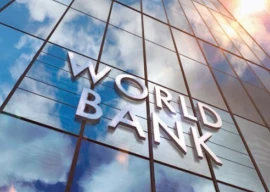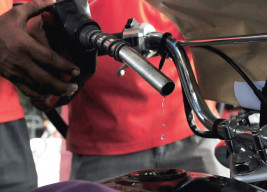
More than $9.7 billion worth of items were imported in July and August 2017, which is 25% higher than the value reported during the same period in 2016. With exports only 12% higher, the increase in imports has further contributed to the burgeoning trade deficit.
As the national elections approach, on-going investment projects are likely to gain further momentum as the government will push for their completion. Further, the overvalued exchange rate increases the demand for imported goods, particularly of commodities that are sensitive to price changes. Therefore, it is all the more important to discuss the increasing trend in imports, regardless of whether they are CPEC or non-CPEC related.
Pakistan's first coal import terminal begins operations
The State Bank of Pakistan (SBP) reported a 51% increase in total imports in July FY18 over the value reported in July FY17. The transport group increased by more than 94% while the machinery group increased by more than 63%. There was an increase of more than 600% in the imports of aircraft, ships and boats, and an increase of more than 260% in the imports of completely built up units of buses, trucks and other heavy vehicles.
However, the imports of completely knocked down buses, trucks and other heavy vehicles declined by more than 30%. Similarly, the imports of power generating machinery and electrical machinery more than doubled in July FY18. On the other hand, the imports of raw cotton declined by approximately 30%, while the imports of finished textile products increased by approximately 90%. Therefore, as expected, there was an increase in imports across almost all items, in particularly capital goods, such as transportation equipment and machinery. There were also significant increases in the imports of palm oil, soybean oil and petroleum crude.
Although the above analysis suggests that the imports of capital goods and transport equipment has increased substantially in recent months, further analysis on the composition of the imports is necessary.
Data is borrowed from UN Comtrade and classified according to the Broad Economic Categories. In 2016, capital goods constituted approximately one-fifth of the imports into Pakistan and transport equipment was 8% of the total imports. Approximately 28% of the transport equipment was passenger motor cars, while more than 40% were parts and equipment. On the other hand, industrial supplies constituted more than one-third of the total imports into Pakistan.
However, more than 80% of the industrial supplied was in the form of processed goods. The value-addition within Pakistan is likely to be greater for goods imported in the form of primary goods than in the form of processed goods. We observe a similar pattern for fuels and lubricants, as more than 70% of the total imports of fuels and lubricants are in the form of processed goods, such as motor spirit, rather than in the form of primary goods such as crude oil.
CPEC provides avenues to target $100b Chinese agri-market
Although both capital goods and industrial supplies dominated the imports into Pakistan from China in 2016, the imports of capital goods were slightly greater than the imports of industrial supplies. The former was approximately 43% of total imports from China, while the latter was approximately 41%. However, it is important to stress that all of the industrial supplies imported from China was in the form of processed goods rather than in the form of primary goods.
The products can be further categorised on the basis of the intensity of research and development activities undertaken to produce them. The correspondence table on research intensity of each good is borrowed from World Integrated Trade Solution.
High-tech goods include sophisticated machineries; medium-tech goods include man-made textile fibres, motor vehicles and textile and leather machinery. The domestic demand for high-tech and several medium-tech goods in Pakistan is likely to be satisfied through imports. On the other hand, low-tech goods involve minimal research and development activities such as textile articles, iron and steel rods, jewellery and office stationary supply. The rest of the goods are classified either as resource-based products or as primary products.
A quarter of the total imports into Pakistan in 2016 were medium-tech products. High-tech and low-tech products were 12% and 11% of the total imports, respectively. The rest of the imports were resource-based and primary products. On the other hand, more than 32% of the imports from China were medium-tech, approximately 27% were high-tech and 24% were low-tech products.
Pakistan imported more than $900 million worth of high-tech telecommunication equipment and rotating electric plants from China. Pakistan imported more than $400 million worth of medium-tech steam generators and boilers and more than $300 million worth of parts and accessories of heating and cooling equipment from China.
Imports of textile machineries from China were less than $150 million, with a negative growth rate of 5% between 2015 and 2016. Further, Pakistan imported more than $500 million worth of low-tech textile yarn and flat-rolled alloy steel from China in 2016.
In summary, the imports of capital goods from China are more likely to consist of power generating equipment and construction equipment rather than industrial machinery and equipment to directly support industrial growth.
Further, Pakistan is increasingly becoming dependent on imports of processed goods rather than on the imports of primary goods. World Development Indicators reported value addition in the manufacturing sector as a percentage of GDP at 12.7% in 2016, the lowest value since 1962. The highest ever was in 2005 at 18.6%.
The imports of textile and leather machinery constituted more than 13.6% of the total imports of medium-tech goods in 2005, but only 4.6% in 2016. Although, it is necessary to upgrade the quality of infrastructure within the country, it is also crucial to maintain the level of industrial growth.
This situation is likely to be exacerbated with the overvalued exchange rate as the influx of imported goods is likely to impact domestic production. Therefore, a viable industrial policy that attracts investments across several vital industries is much needed.
The writer is Assistant Professor of Economics and Research Fellow at CBER, IBA
Published in The Express Tribune, September 25th, 2017.
Like Business on Facebook, follow @TribuneBiz on Twitter to stay informed and join in the conversation.


















COMMENTS
Comments are moderated and generally will be posted if they are on-topic and not abusive.
For more information, please see our Comments FAQ